ARTISAN SOURDOUGH

Made Simple
A Beginners Guide to Delicious
Handcrafted Bread with Minimal Kneading
Recipes and Photography by
Emilie Raffa
Author of The Clever Cookbook and
Creator of The Clever Carrot

Thank you for buying this
Page Street Publishing Co. ebook.
To receive special offers, bonus content,
and info on new releases and other great reads,
sign up for our newsletters.

Or visit us online at
us.macmillan.com/newslettersignup
The author and publisher have provided this e-book to you for your personal use only. You may not make this e-book publicly available in any way. Copyright infringement is against the law. If you believe the copy of this e-book you are reading infringes on the authors copyright, please notify the publisher at: http://us.macmillanusa.com/piracy.
This book is dedicated to those who will continue to share the powerful journey of sourdough.




Ever wonder how to bake sourdough, but dont know where to begin? Im going to tell you a secret: You dont have to be a professional baker or have a concrete knowledge base to get started. Sourdough can be accessible to anyone. All you need are a few basic ingredients and tools, and Ill guide you the rest of the way.
So what is sourdough anyway? In a nutshell, sourdough is slow-fermented bread. Whats unique is that it does not require commercial yeast in order to rise. Its made with a live fermented culture, a sourdough starter, which acts as a natural leavening agent. Now, if this concept sounds absolutely bizarre, dont worry, youre not crazy. I used to think it was some kind of mad science project myself. But in actuality, its a technique that can be traced back thousands of years, before commercial yeast was available to bakers.
Sourdough is known for its delicious, complex flavor. It is not necessarily sour dough. The flavor can be either mild or tangy, depending on how the starter is cared for and how the dough is made. You wont find any hydrogenated oils, corn syrup, or preservatives lurking in homemade sourdoughits 100% natural. As an added health benefit, the slow fermentation process breaks down the hard-to-digest proteins and enzymes found in wheat, which is why some people who are gluten-sensitive have reported being able to digest sourdough without any issues.
Interestingly enough, thats not what lured me into sourdough at all. I had been admiring the popular Australian blog Fig Jam and Lime Cordial, where Celia documented her experience with sourdough baking at home. Her style was so approachable that any time I read one of her posts, I thought to myself, I want that. I want what shes having. And it wasnt about the bread, necessarily (although it looked incredible and I wanted to rip off a chunk right though the computer screen!). It was her enthusiasm, both sincere and infectious, that lured me in from the opposite side of the globe. Eventually, I built up enough courage to reach out and connect with her, which marked the beginning of an unexpected friendship.
As you can imagine, I nearly fell over when Celia asked, Hey hon, do you want me to send you some of my sourdough starter? Two weeks later, a small envelope dotted with Australian postage arrived at my doorstep. Inside was a plastic bag filled with tiny white flakes. How this peculiar-looking thing made it through customs was beyond me. But it didnt matter. This was Priscilla, Celias sourdough starter.
One of the first things I learned is that sourdough is meant to be shared. Priscilla, almost 10 years old at the time of writing this book, has been shared all over the world. Her offspring can be found in the tiny kitchens of New York and the tallest buildings of Dubai. This spawned a family tree of bakers and new close friendships. Whats fascinating is that each of us has welcomed Priscilla into our homes, making her unique to our own sourdough journey. We are living proof that anyone can adapt this ancient technique into modern-day life.
With my new sourdough starter in tow, I was ready to bake bread. Admittedly, the first few loaves that emerged from my tiny oven looked more like hockey pucks than anything edible. But eventually, my luck changed. Every now and then, Id post a few pictures online or to my blog, The Clever Carrot, and inquiring minds wanted to know my formula. Formula? To my knowledge, sourdough was simple: Throw everything into a bowl, let it rise overnight, and walk away. No kneading. Basic shaping. It was just bread after all, right?
Naturally, curiosity kicked in and I did the worst thing you could possibly do: I took to the Internet to research. Down the rabbit hole I went, quickly becoming entangled in a web of confusing sourdough lingo. Leaven builds? Bakers percentages? The more I dug around, the more I realized that there was a wealth of knowledge beyond my bubble, all of which was baffling yet intriguing at the same time.
Convinced that I could bake better bread, I ditched my original formula and came up with a new one. It was more technical and involved, and it seemed like the right way to make sourdough. But in reality, it had quite the opposite effect. My once-beautiful, crispy crust was now tough and leathery, and the inside crumb left much to be desired. Looking back, there was nothing wrong with implementing a new technique, except for the itty-bitty fact that I relied way too heavily on instruction and lost touch with the art.
And so, after several failed loaves, I just gave up. Sourdough took a back seat, and I started tempering and eating dark chocolate instead. However, during my hiatus, I never stopped thinking about sourdough. I published a tutorial on my blog called Sourdough Bread: A Beginners Guide because at the time, a go-to guide did not exist. Everything seemed far too advanced, and there just wasnt enough for the beginner. This was my attempt to bridge the gap and to help others in a way that was easier to understand. As a result, it created an online hub connecting people all over the world looking for the same thing. And to this day, it has become the most popular post on my blog.
What Ive come to realize, hundreds of loaves later, is that sourdough is not paint-by-numbers; its a blend of personal expression and technique. Its also community, sharing, wonderment, and, ultimately, an ongoing journey that has brought me to the pages of this book. Whether youre in it for the science or just a slice, baking bread is one of the most rewarding things you can do. And now, Im excited to share that journey with you.


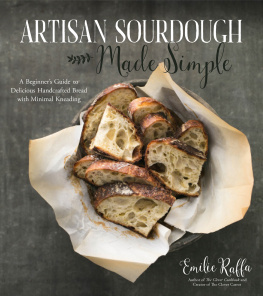
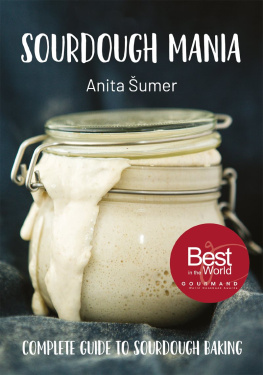

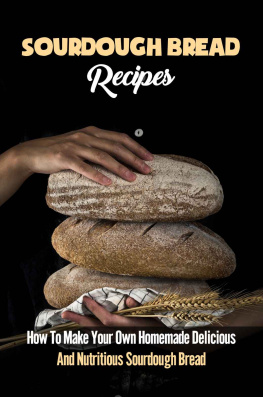
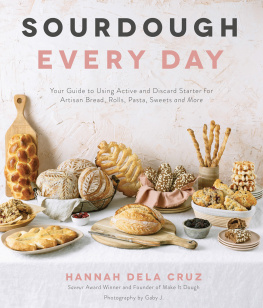

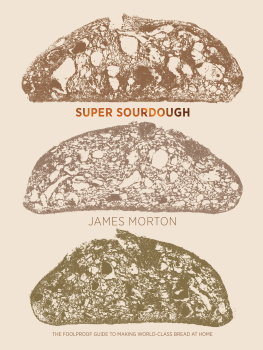
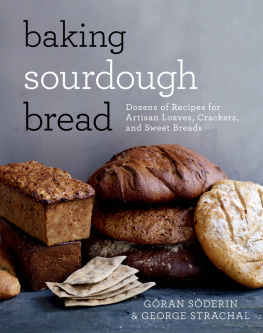
 Made Simple
Made Simple




